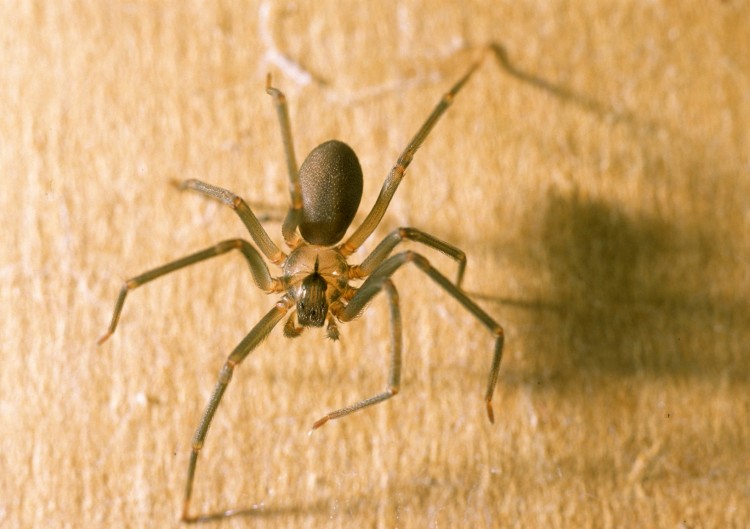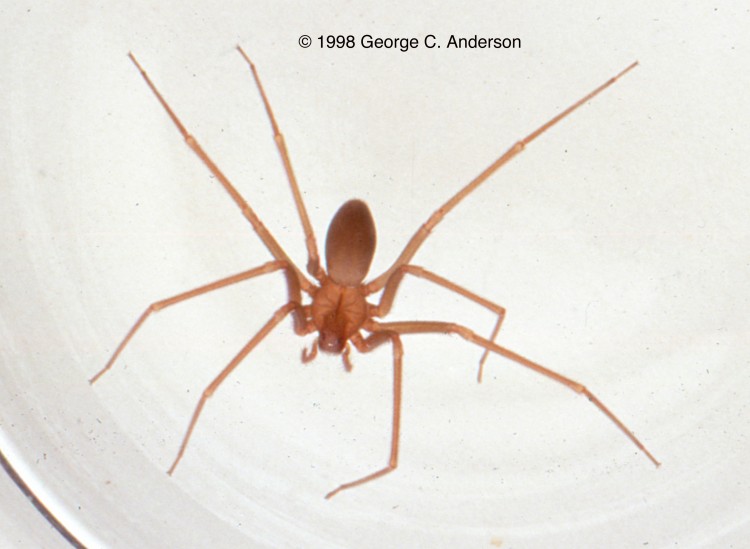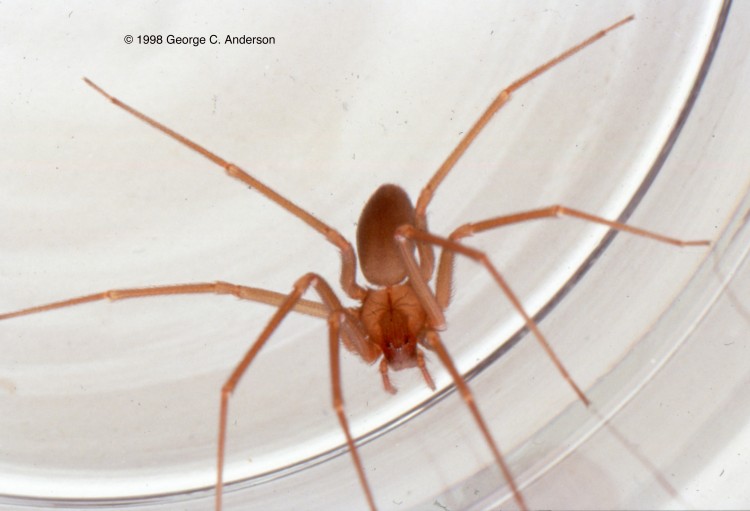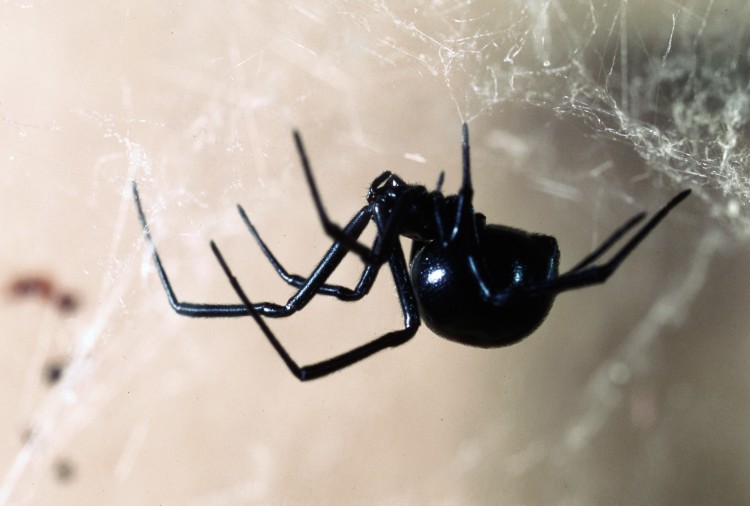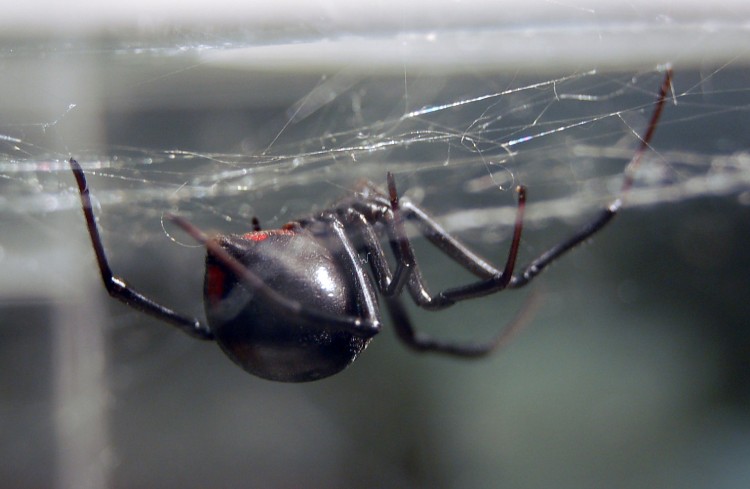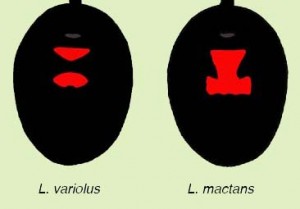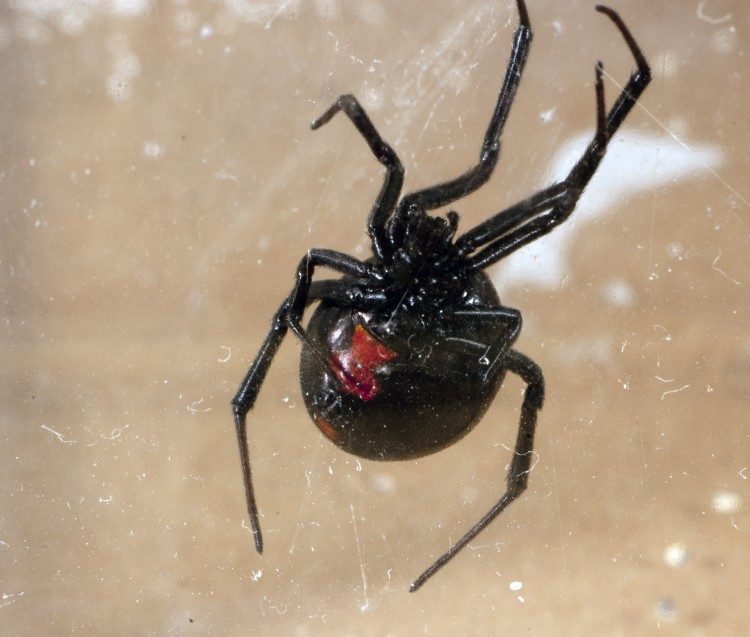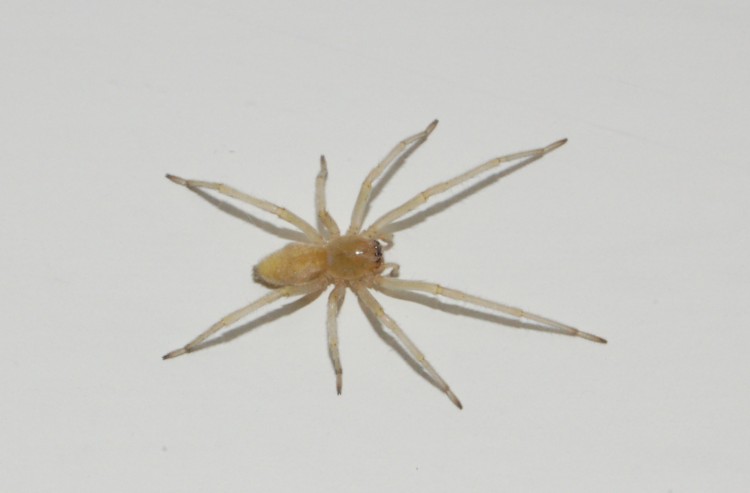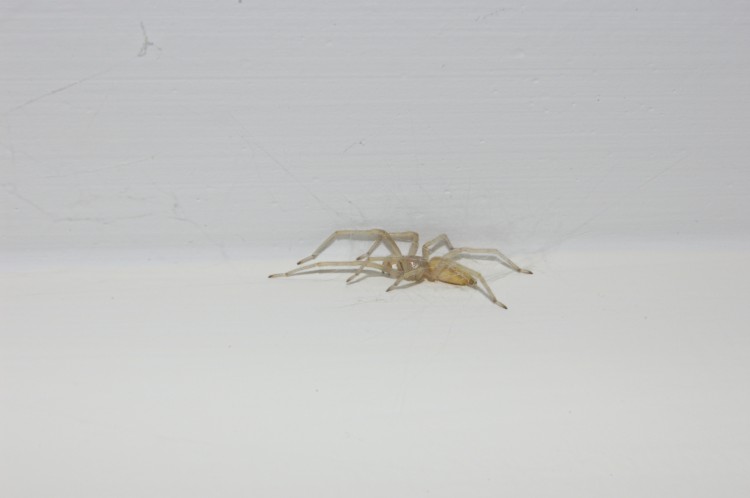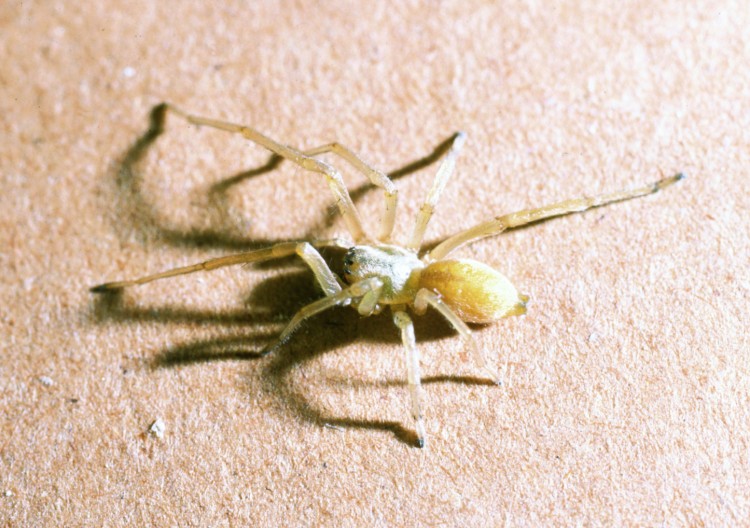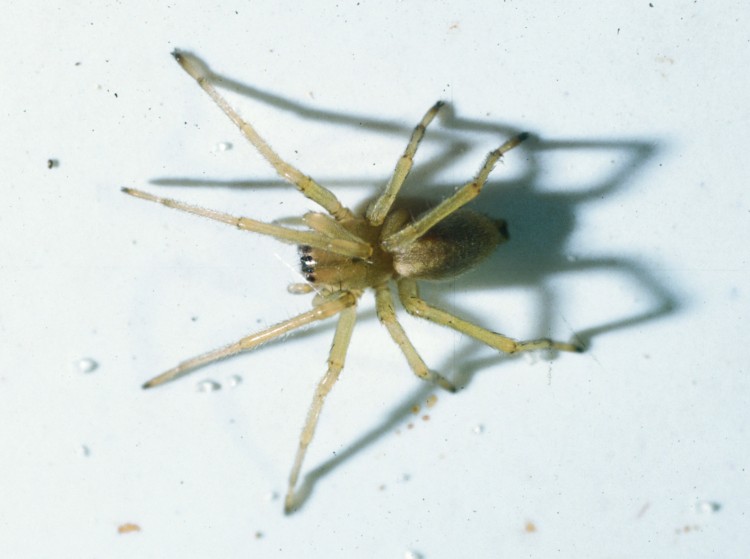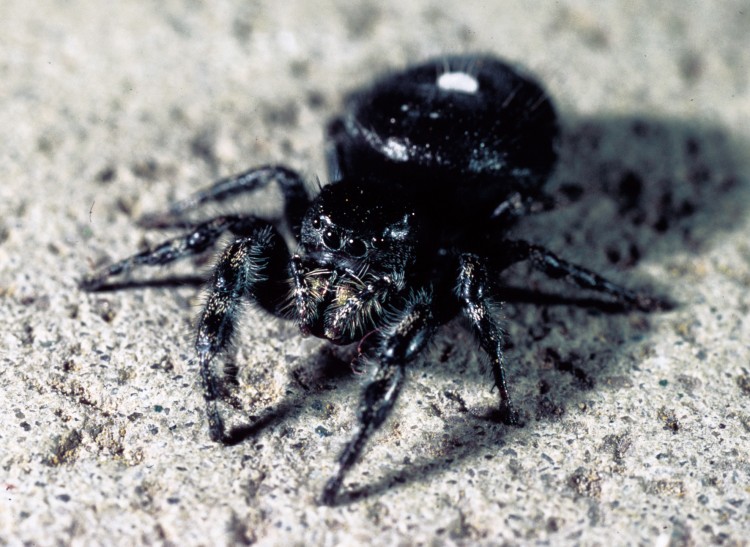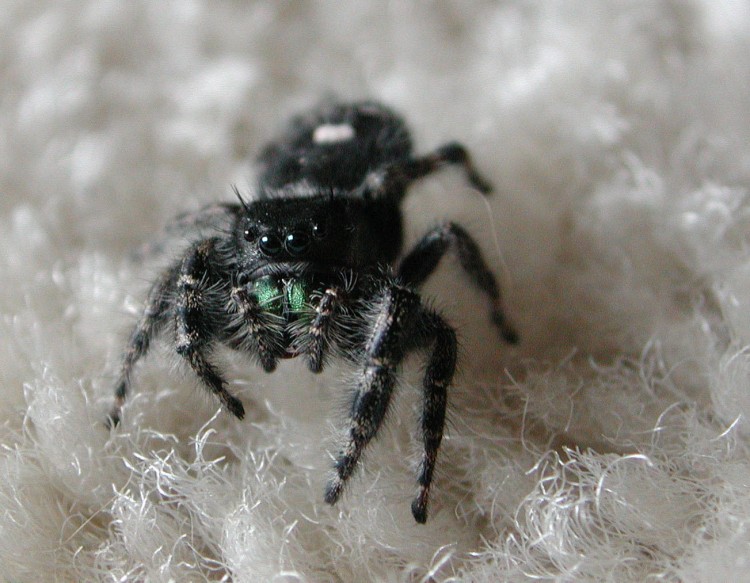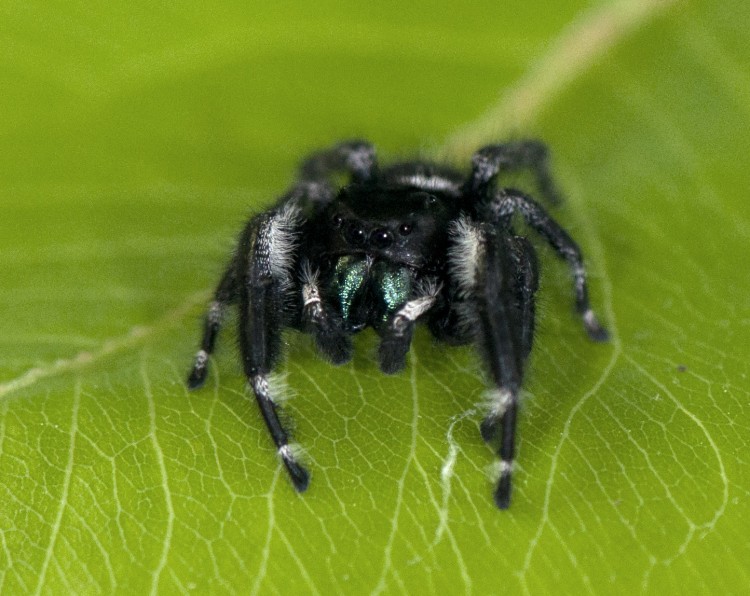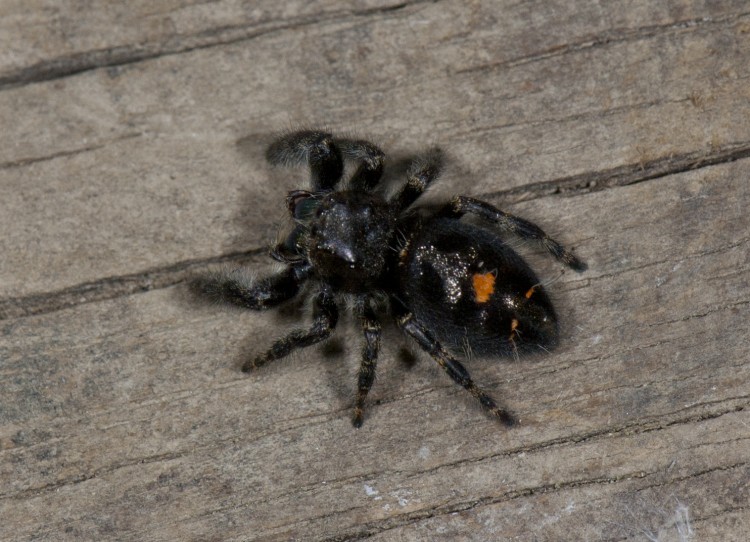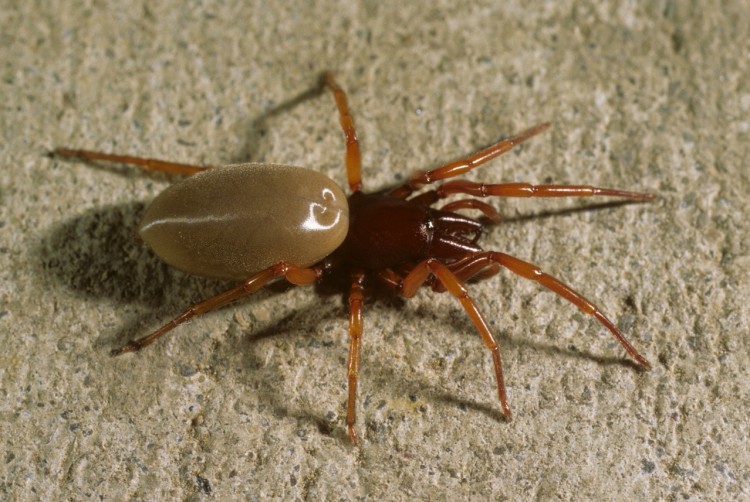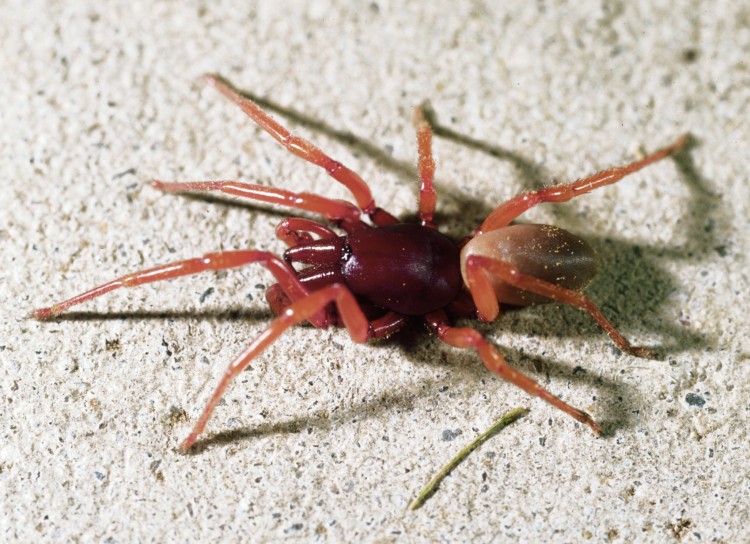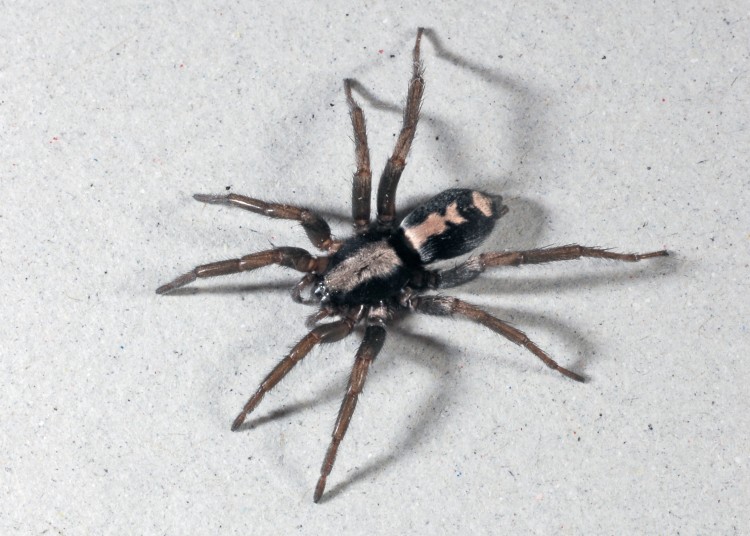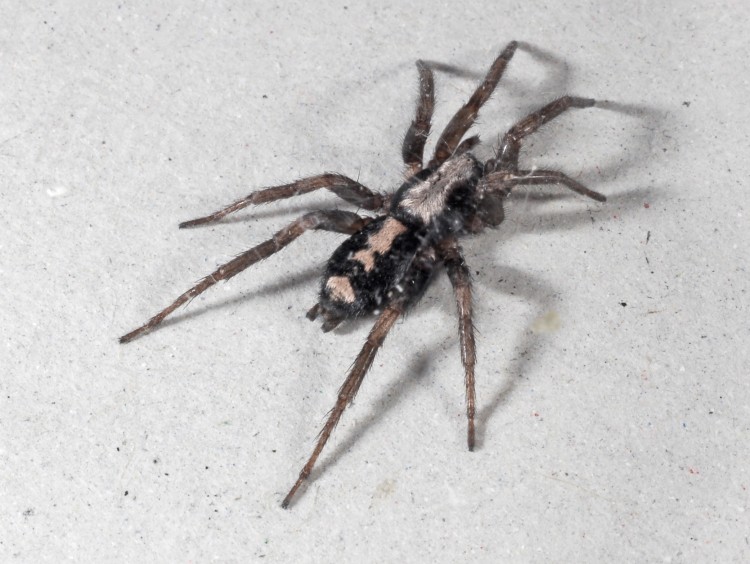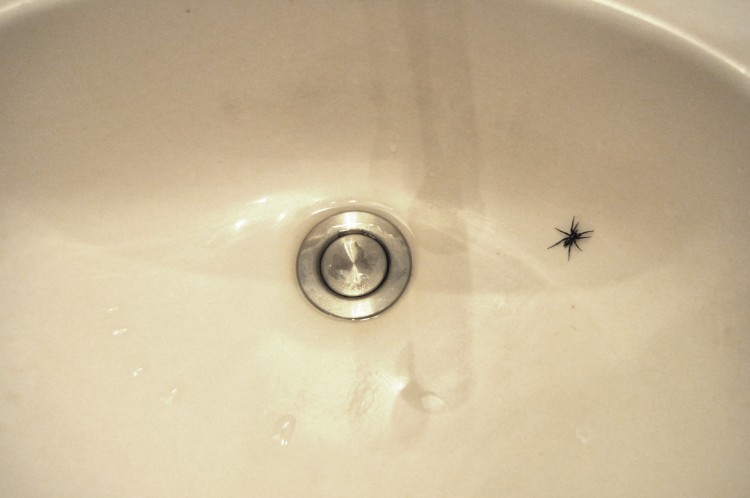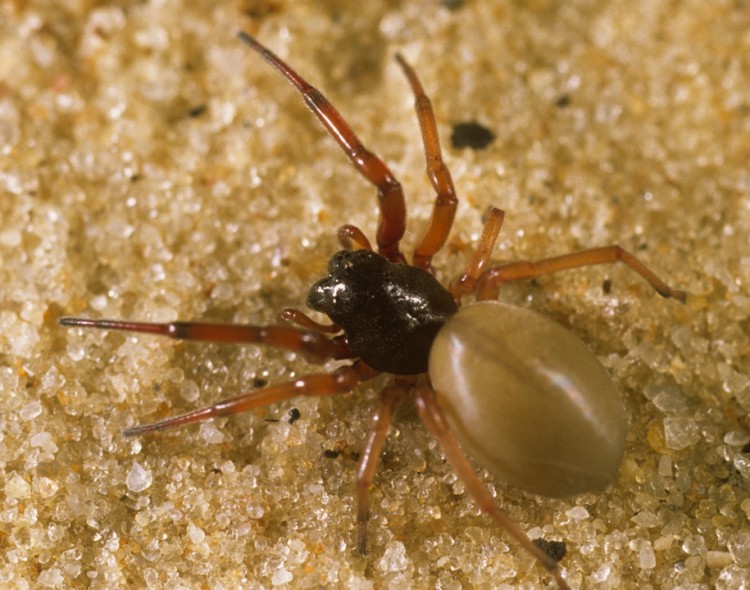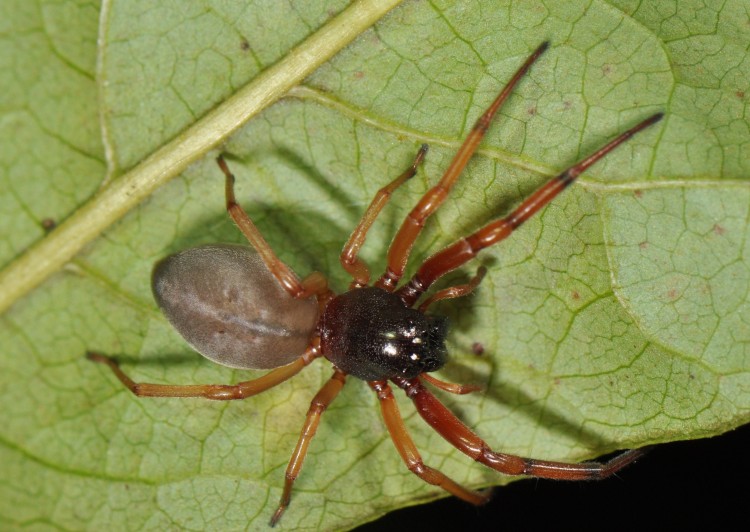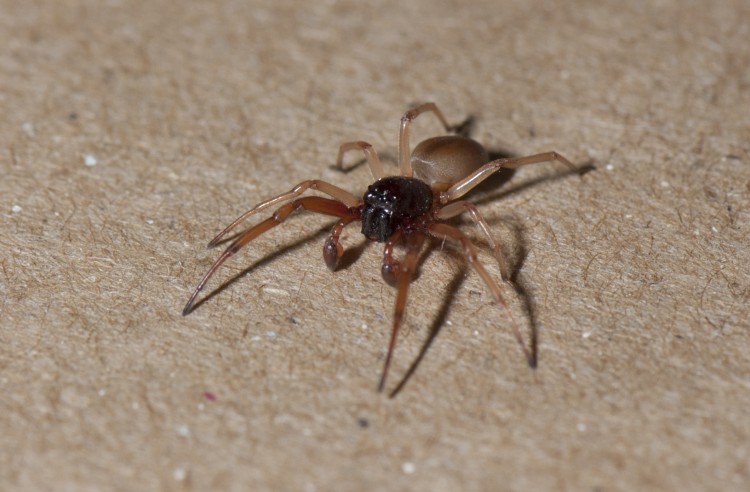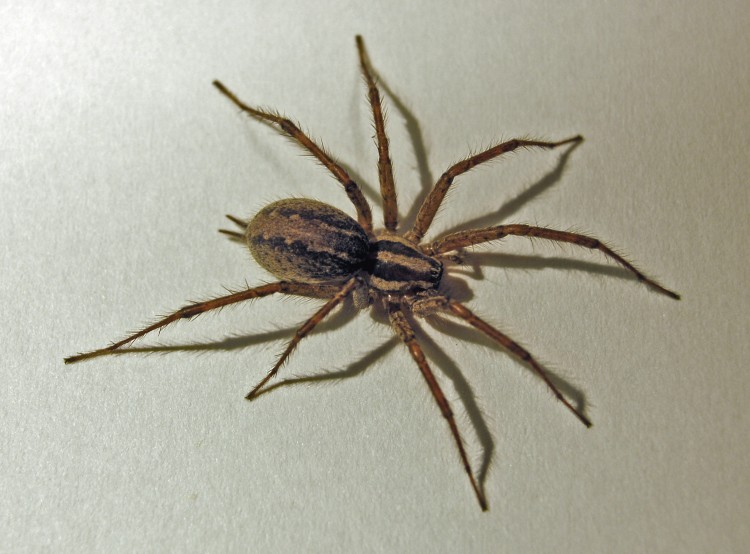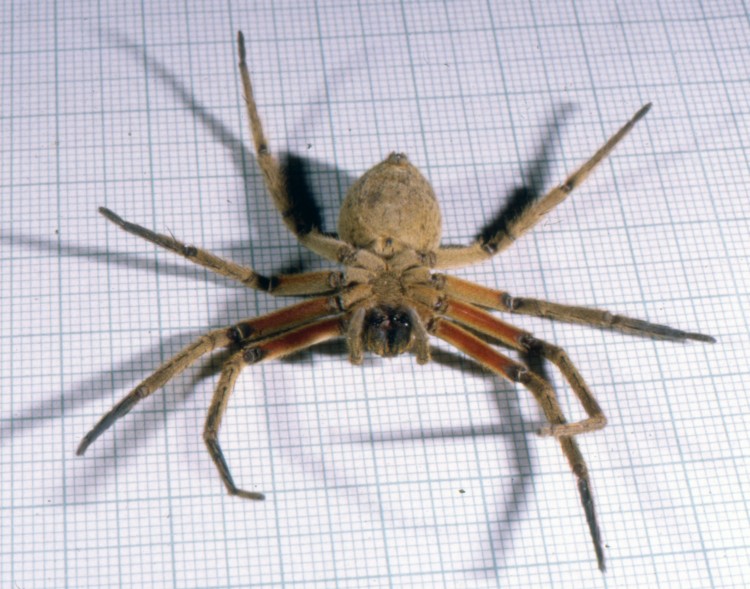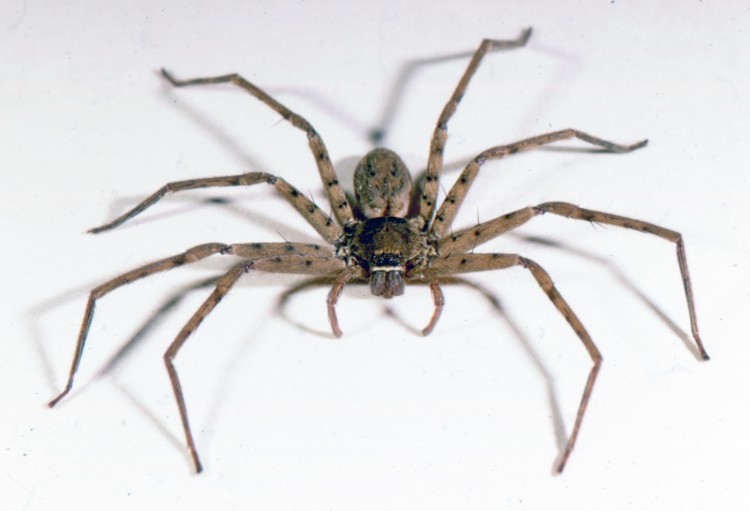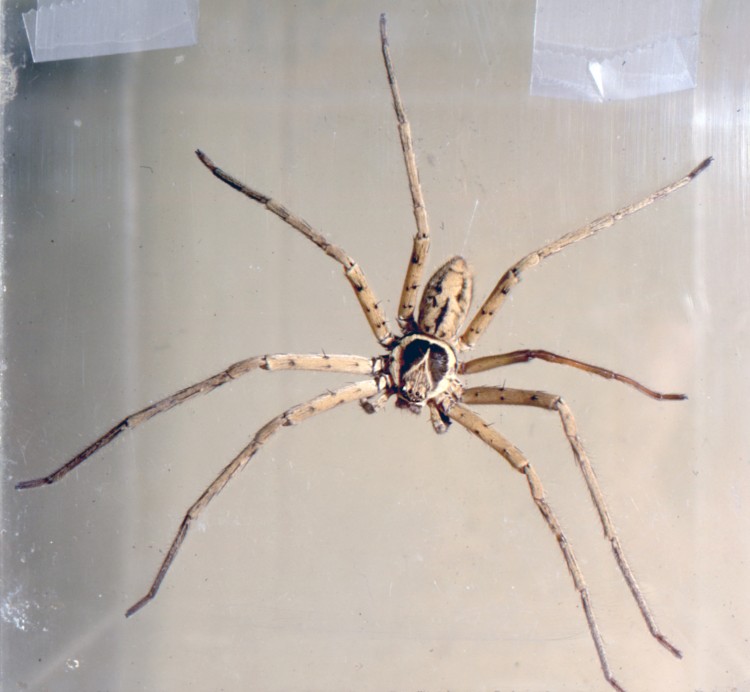Ohio’s Biting Spiders
In Ohio there are two main groups of spiders that pose a potential hazard to humans; the recluse spiders and the widow spiders. These spiders are relatively rare in our state.
recluses
The two species of recluse spiders found in Ohio (brown recluse – Loxosceles reclusa, Mediterranean recluse – Loxosceles rufescens). Other common names for these spiders include “brown spiders” or “violin spiders.” In most cases if you find a recluse here it is likely that it was introduced by humans. In Ohio, these species have been found only in or near buildings and they may not survive over the winter outside. We have very few verified records of recluse in Ohio. Since the Ohio Spider Survey began in 1994, we have amassed a large number of (41,000 and counting) spider records. Even so, we have only five separate records during that period of brown recluse in Ohio which are supported by an identifiable photograph or an actual specimen since 1994. In each case so far, the record came from inside a building. In some of these cases there were many recluse found over an extended period. Contrary to popular belief, I am unaware of any brown recluse bite cases in Ohio that have been accompanied by an actual verified spider specimen.
There are many cases of wounds that have been attributed to spider bites, even recluse bites, but many of these represent misdiagnoses. For more information about other causes of wounds that might resemble spider bites, consult this site.
Recluse spiders are not aggressive. Even where these spiders are common, bites are rare. One published study from 2001 collected more than 2,000 brown recluse spiders from a house in Kansas. There were four people living there over the period of the study, but even though they often encountered recluse, the residents were never bitten. The natural range of the brown recluse is south and west of Ohio. For a distribution map of the recluse species in North America, check here.
As the name “recluse” suggests these are relatively shy spiders. Their thin tangle webs are found in the area near the retreat, and if disturbed the spider may rush out and bite. The recluse spiders are mostly a pale or reddish brown color, darker on the cephalothorax (front part of body) and legs. Unlike most spiders, which have eight eyes, recluse spiders have only six eyes, arranged in three pairs. On very close inspection there is a violin-like pattern on the top of the cephalothorax. Many people are confused by somewhat similar markings on other spiders, so this trait is not very useful for identification. The spiders have rather long thin legs, often spread widely and they are adept at running sideways as well as forward and backward. For a detailed discussion of recluse spider identification click here.
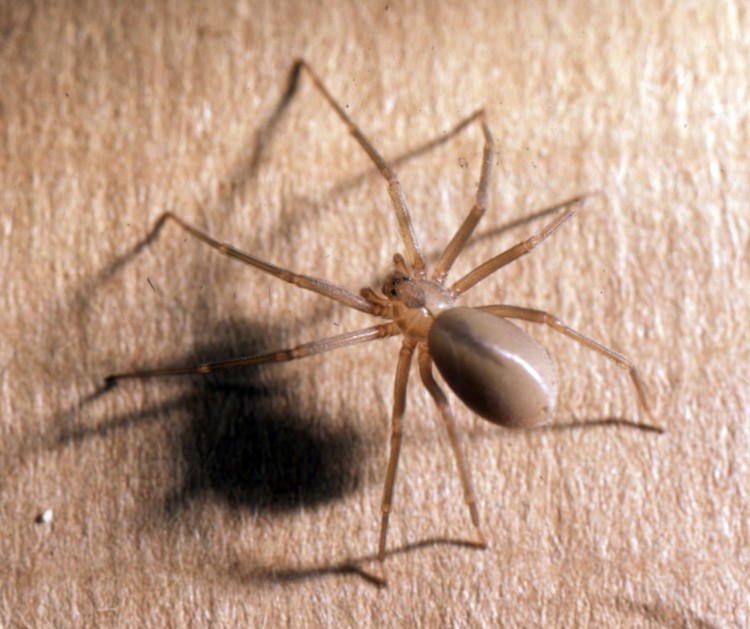
brown recluse (Loxosceles reclusa) This individual has a visible “heart mark” along the center of the abdomen.
Briefly:
If the spider has eight eyes, it is not a recluse.
If the spider has a pattern on the abdomen it is not a recluse.
Some individual recluse have a visible “heart mark” in the center of the abdomen, this is not actually a pattern so much as the dark heart visible against the “background” abdominal color*. The background color of the abdomen depends to a large degree on the recent meals that the spider has had. In many cases the abdomen is dark enough that there is no visible heart mark.
*The heart in spiders hangs inside the top of the abdomen. Under ideal conditions, the heart can be seen beating, yes, even from the outside!
If the spider has visible long spines it is not a recluse.
Recluse have short, curved, velvety hairs that are all of the same length. Many brown colored spiders that people confuse with recluse have both short hairs and long spines. The presence of long stiff hairs or spines makes it likely that the spider in question is NOT a recluse.
Most recluse bites occur when the spider has taken up residence in a stack of cardboard or an article of clothing laying on the floor. As the person picks up the item, or puts on the clothing , the spider is crushed and may bite. The bite of recluse spiders is often not very painful at the time of the bite but the pain may become quite severe after a few hours. The injury is rarely life-threatening except when the victim is very young or aged. Of particular concern are the slow-healing wounds associated with the bites of brown recluse spiders. The hemotoxic venom of the brown recluse acts rapidly by restricting circulation in the capillary beds surrounding the bite and eventually leads to the death of nearby tissue. Surgery may be required to close the wound but is often not appropriate.
widows
The southern black widow, Latrodectus mactans, and the northern black widow, Latrodectus variolus, are both found in Ohio. Records are distributed across most of Ohio, but there are few records from the northwestern glaciated regions (areas covered by glaciers in the past). In Ohio, the black widow is most often associated with old abandoned buildings, wooden outhouses and barns in the southern part of our state. The northern widow may also make its tangle webs under rocks, logs, in cavities under cliff sides, and in shaded areas of woods.
In both of the species, males and females look quite different, the larger females are shiny and black with a red hour-glass shaped mark under the abdomen, in the northern widow the middle part of the hour-glass mark is often missing so that these females appear to have two red marks. Some individuals may also have red markings along the back. Some individuals, often immatures, have quite beautiful patterns of white and red markings on the back.
Males are much smaller and lighter in color with a variety of red or orange marks, often outlined in white, on the abdomen.
Verified bites of black widows are associated with females, males are not known to bite humans. In both species the bite can be serious. The bite of a black widow is neurotoxic, in other words its primary influence is no the nervous system. The actual bite may feel like a needle prick but eventually causes painful muscle spasms and cramps. Complete recovery is likely for healthy adults.
The easiest way to distinguish the northern black widow (Latrodectus variolus) from the southern black widow (Latrodectus mactans) is the shape of the little red spot on the underside of the abdomen. Both species can have a variable number of red or white spots on the upper side, but they have a famous “hourglass” shaped spot on the underside. In the southern black widow the spot is contiguous with a narrow waist that is connected. The back part may not be quite triangular, it may even look a bit squared off. In the northern black widow the red spot is broken. Sometimes the two spots are well separated. In other individuals they are nearly touching. Below is a diagram of the typical spot patterns:
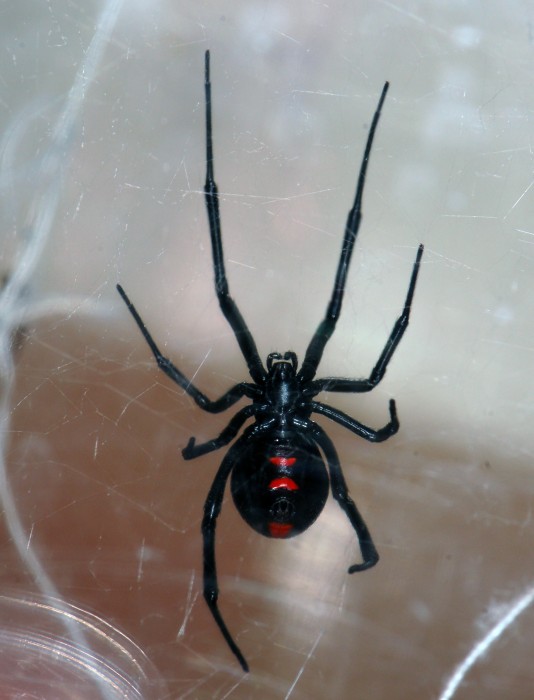
underside of a northern black widow (Latrodectus variolus) showing an “hourglass mark” of two distinct red spots
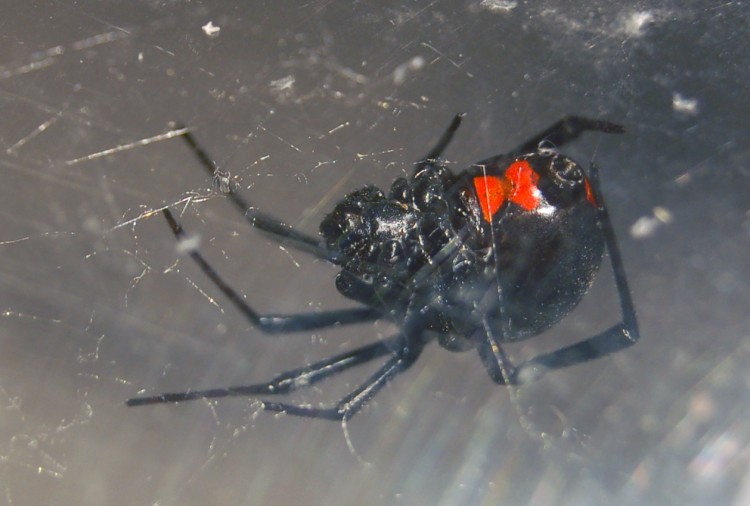
underside of a northern black widow (Latrodectus variolus) with an “hourglass” of two red spots nearly touching
other Ohio spiders that have bitten
There are a few other species of spiders which occur in Ohio that have been known to bite. For most of these species the bites had few lasting effects. Typically the bite caused local pain, sometimes local inflammation, that resolved within a few days. These biters include the agrarian or yellow sac spiders (Cheiracanthium inclusum and Cheiracanthium mildei), the bold jumper (Phidippus audax), the parson spider (Herpyllus ecclesiasticus), the woodlouse spider (Dysdera crocata), the bullheaded sac spider (Trachelas tranquillus) and the grass spider (Agelenopsis pennsylvanica). As with the dangerous spiders described above, actual bites were the spiders’ defensive reaction to being accidentally crushed, such as when the spider has taken up residence in a glove, article of clothing, or stored material.
cargo spiders
There are a few spiders which occasionally arrive with produce at the grocery store that are potential bite risks; huntsman (Heteropoda venatoria) and the banana spiders (members of the family of wandering spiders in the genera Phoneutria, Ctenus or Cupiennnius). The huntsman and banana spiders are relatively large and active spiders that could bite if cornered, but these active spiders usually escape from humans without incident. As a result of modern produce handling procedures, these animals are very rarely reported in Ohio today.
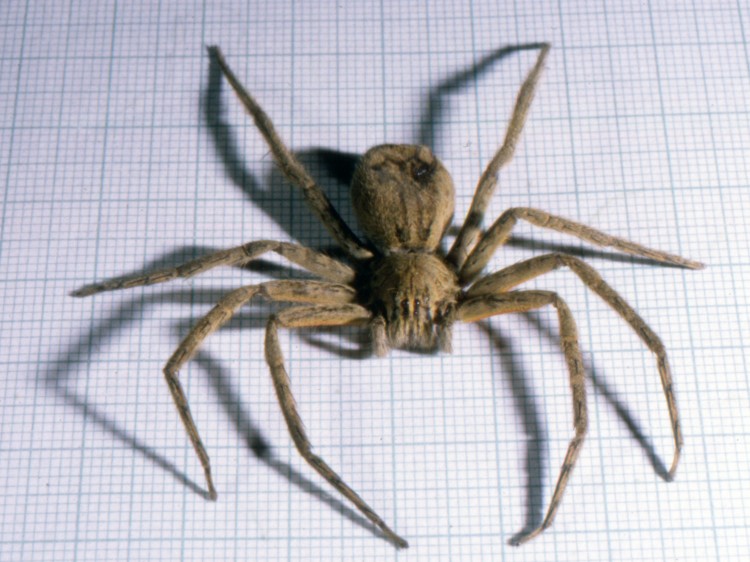
dead wandering spider (Cupiennius coccineus) that came in to Columbus Ohio with bananas from Costa Rica

